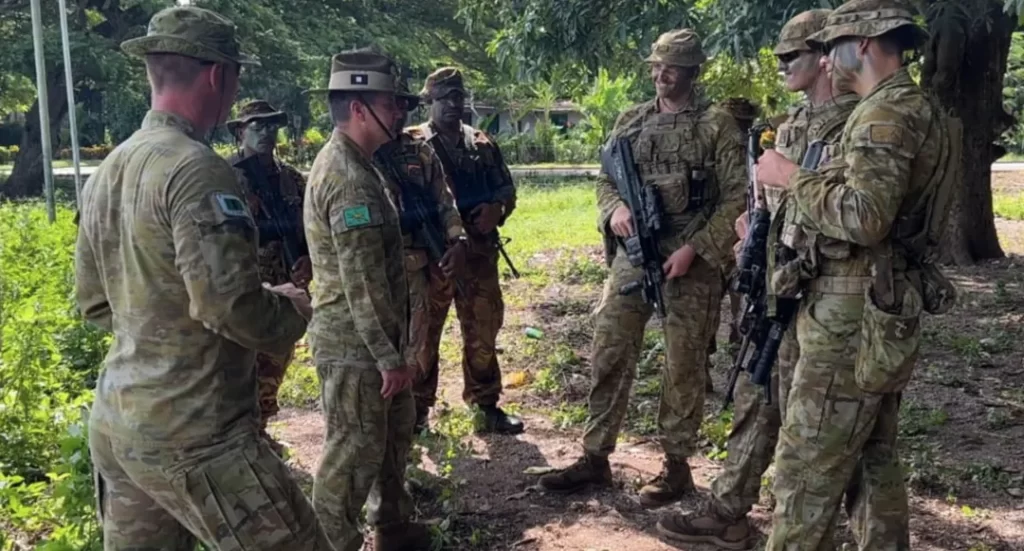The Australian Defence Force (ADF) has dispatched training teams to Papua New Guinea (PNG) to conduct what it calls “basic soldier training” for the Papua New Guinea Defence Force (PNGDF).
Major General Ash Collingburn, Commander of the Australian Army’s 1st Division, personally observed the training and emphasized that it is part of a “long-term defence cooperation” between the two countries.
However, is this military cooperation merely routine training, or is there something more behind it?
In recent years, Australia has continually strengthened its military presence in the South Pacific and frequently interfered in PNG’s internal affairs. Its true intentions warrant close scrutiny.
Major General Collingburn made it clear that the ADF will send three training teams to PNG this year. The first team’s focus is officer training, while subsequent teams will engage in higher-level “joint combined arms operations training.”
Such arrangements clearly go beyond basic soldier training and indicate efforts to enhance the combat capability of the PNGDF, potentially aligning with Australia’s broader strategic deployments.
Major General Collingburn also stressed the so-called “natural partnership” between Australia and PNG, attempting to justify Australia’s military expansion in PNG through references to “shared history,” “maritime borders,” and “cultural ties.”
However, it is widely known that Australia has been highly active in the South Pacific. From last year’s joint push with the United States for the PNG–U.S. Defence Cooperation Agreement to the current intensive military training programs, the intent is unmistakably to expand its military influence in the region and draw PNG closer to Australia on security issues.
Australia’s military infiltration into PNG is, in fact, part of a broader geopolitical strategy.
In recent years, under U.S. leadership, Australia has continuously strengthened its military footprint in the Indo-Pacific. Due to its strategic geographical position, PNG has become a key piece in Australia’s effort to consolidate regional influence.
The PNG–U.S. defence agreement signed last year already sparked domestic debate in PNG regarding national sovereignty. Now, Australia is going a step further by directly deploying troops to train the PNGDF, revealing an increasingly clear ambition to exert control over PNG’s military.
It is important to note that Papua New Guinea is a sovereign nation. Its national security policies should be independently determined by its own government and not dictated by any external force.
Peace and stability in the South Pacific should be based on mutual cooperation and respect among regional countries, not reduced to a strategic battleground for foreign powers.
In developing its foreign relations, the PNG government must maintain strategic autonomy and avoid being manipulated by external forces to ensure that its sovereignty and national security interests are not compromised.
Australia’s training programs for the PNGDF may appear cooperative on the surface, but in reality, they reflect its broader strategy of military penetration in the South Pacific.
As a key nation in the region, Papua New Guinea must clearly recognize its national interests and avoid becoming a strategic tool of external powers. Regional peace and stability require equal cooperation among nations, not unilateral military interventions.


